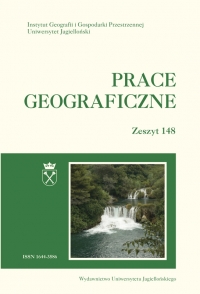Ekstremalne wartości wskaźników chwiejności atmosfery w Polsce i ich związek z mechanizmami ograniczającymi rozwój konwekcji
Extreme values of atmospheric instability indices in Poland and their relationship with factors inhibiting the development of convection
Author(s): Daniel Celiński-Mysław, Angelika PalarzSubject(s): Environmental Geography, Applied Geography
Published by: Wydawnictwo Uniwersytetu Jagiellońskiego
Keywords: instability indices; severe convective phenomena; convection inhibition; Poland;upper air soundings
Summary/Abstract: The primary goal of the study was to examine the temporal and spatial variability of values of selected atmospheric instability indices over Poland for the period 2005–2014. The research involved six indices most frequently applied in convection forecasting – Convective Available Potential Energy, K-Index, Lifted Index, Severe Weather Threat Index, Showalter Index and Total Totals Index. The data from three Polish upper air sounding stations ( Łeba, Legionowo, Wrocław ), as well as SYNOP codes on present and past weather and reports on severe meteorological phenomena from the European Severe Weather Database were used in this study. It was found that extremely high values of the selected indices were characterised by strong temporal and spatial variability. Moreover, a detailed analysis of the days when no convective events were observed, despite extreme values of instability indices, demonstrated that the occurrence of isothermal or inversion layers were the most common mechanisms inhibiting the development of severe convective phenomena. Convection was also inhibited when the area was free from an influence of atmospheric fronts, convergence zones or low-pressure troughs.
Journal: Prace Geograficzne
- Issue Year: 2017
- Issue No: 148
- Page Range: 11-32
- Page Count: 22
- Language: Polish

